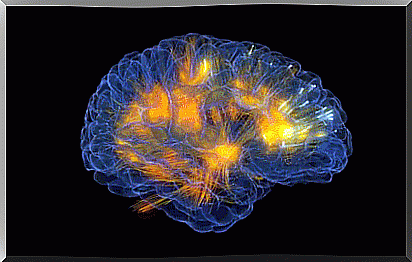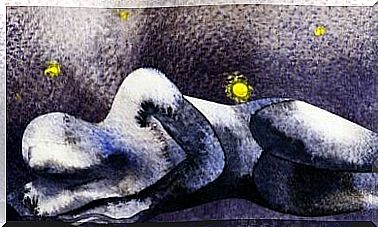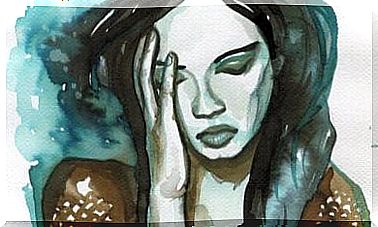10 Fun Facts About Dreams You’ll Love

Since the beginning of time, dreams have been an enigmatic subject for human beings. Curiosities about dreams have been present. For many years there were doubts whether the scenes that took place while we were sleeping were real or not. For several centuries, dreams have been explained as magical or mystical events, always being associated with a reality that is beyond our understanding.
Greek mythology is quite eloquent about it. For the ancient Greeks, the god Chaos, who was the twin brother of Thanatos, or Death, had two children. One of them was Nicte, the Night, and another was Erebro, the Darkness of Hell. These two brothers had a son: Hypnos, the god of Sleep. Thus, chaos and death gave rise to night and darkness. And from this original combination, dreams were born.
Then Hypnos had three children: Morpheus, Ichelo and Fantaso. Morpheus is the one that appears in human dreams. Adopt anyone’s shape. Therefore, any human figure who appeared in dreams was another personification of Morpheus. So did Iquelo with animals, and Fantaso with inanimate objects. To the Greeks, human dreams were nothing more than a game of the gods.
These are not the only curiosities about the dreams that exist. First it was mythology and later science that added or revealed fascinating data. The following 10 trivia are some of the most interesting.
Curiosities about dreams

1. The unusual increase in brain activity
The only thing we rest when we sleep is consciousness. Far from maintaining rest, our brain works intensely during sleep and dreams. Even in the deepest phases, when slow waves occur, the activity doesn’t stop even for a second.
What happens is that in some stages of sleep there are some brain regions that work in a slower and more coordinated way. However, during the so-called REM phase there is a real burst of activity. So much so that if you do an EEG during this step, we will find a pattern very similar to what we would find in a person who was awake.
2. We spend about 6 years of our lives dreaming
Whenever we sleep, we end up dreaming. There is no other alternative. Those who say they don’t dream say this because they don’t remember what happened when they closed their eyes. When we’re already asleep, we can’t help but dream. Finally, we clarify one of the most widespread curiosities about dreams.
Research indicates that the sleep stages properly described appear in periods of 5 to 20 minutes. If we take all these fractions of time and add them up, the end result is a period of about 6 years of life that we spend dreaming. For this statistic, the life expectancy of that time was considered as a reference.

3. The dreams of men and women are different
Some studies have found subtle differences between men’s and women’s dreams. The contrast between them occurs mainly in relation to the content of dreams. Scenes and characters vary from one genre to another.
According to some studies, men dream more about scenarios and situations where aggressive acts occur. Women, on the contrary, dream for a longer period of time. In their dreams, details are more intense and situations more complex.
4. Not all dreams are colored
Another of the most popular curiosities about dreams is whether they are colored or in black and white. From the dreamers’ information it is estimated that eight out of 10 dreams are colored. Everyone dreams in black and white. However, a small percentage of the population can never dream in color, or at least seem not to remember it.
In one experiment, a group was asked to select the color scheme that was associated with the dream. This requirement was made immediately after they got up. Almost all volunteers chose pastel shades. So, we can conclude that there is a tendency to dream of pastel colors.
5. Negative emotions are more common
During dreams we not only visualize the scenes and characters, but also experience many emotions. This is fully demonstrated in the extensive research that has been done by Calvin Hall on dreamers. This researcher managed to gather 50,000 narratives related to dreams.
Not surprisingly, it helped a lot that while we were sleeping we experience almost every emotion. However, the surprising thing is that the emotion that is most referred to is anxiety. And there is also a clear predominance of other negative emotions, such as fear and anger, during dreams.

6. There are universal dreams
Scholars on this subject have revealed that there are some repeated dreams. The most curious thing is that they appear the same way in very different cultures. That is why we speak of “universal dreams”, or subjects that we all have dreamed of at some point.
One of those universal dreams is that of persecution. Almost everyone has also dreamed of being attacked by someone or falling into an abyss. Dreams of being bullied at school or being naked in front of a large number of people are also quite frequent.
7. Ex-smokers dream more vividly
According to a report published in the Journal of Abnormal Psychology , people who smoked for a long time and then quit the habit have more vivid dreams than normal. That is, more realistic and detailed.
In a survey of 243 people who had quit smoking, 33% reported having dreams related to smoking. This happened between one and four weeks after being abstinent. 97% stated that they had never dreamed of smoking before quitting.

8. In dreams only things and people you know appear
A fact that has been proven is that we never dream of unknown people. The brain does not invent a face. Those who appear in dreams are people we’ve seen at some point, even if only occasionally.
As absurd as the characters that appear during our dreams are, they are never unknown. The same thing happens with objects. Sometimes utensils appear that look completely new. However, they are a decomposition or deconstruction of already known objects.
9. External stimuli intervene in dreams
After carrying out some studies, the phenomenon known as “dream incorporation” was found, one of the most surprising curiosities about dreams. He makes reference to the fact that, on some occasions, environmental issues end up being incorporated into dreams. They fuse together in a way that could be interpreted as “coherent”.
This happens, for example, when the person is dreaming that he is at school, in a class. Suddenly, the alarm clock goes off and the dreamer associates this sound with the ring that signals the end of the lesson.

10. Paralysis occurs while we are sleeping
In this case we are talking about the well-known and dreaded “sleep paralysis”. We refer to a physiological phenomenon that occurs every time we sleep. Some glands secrete a hormone that induces sleep. Then the neurons send signals to the spinal cord to let this organ relax. As sleep progresses, not only relaxation occurs, but paralysis.
This brain mechanism has a purpose. A person could start “acting” during sleep at any time. This would involve some risks under certain conditions. Therefore, the paralysis induced through this process ensures that the body remains at rest until the moment of waking up.
Science has not yet unraveled all the riddles and curiosities about dreams. What’s more, it hasn’t even been able to clarify the exact reasons why we sleep and dream. We already know it’s not for resting, in any case. Therefore, the world of dreams remains an unknown realm, in which we enter and leave daily without fully understanding its uniqueness.









